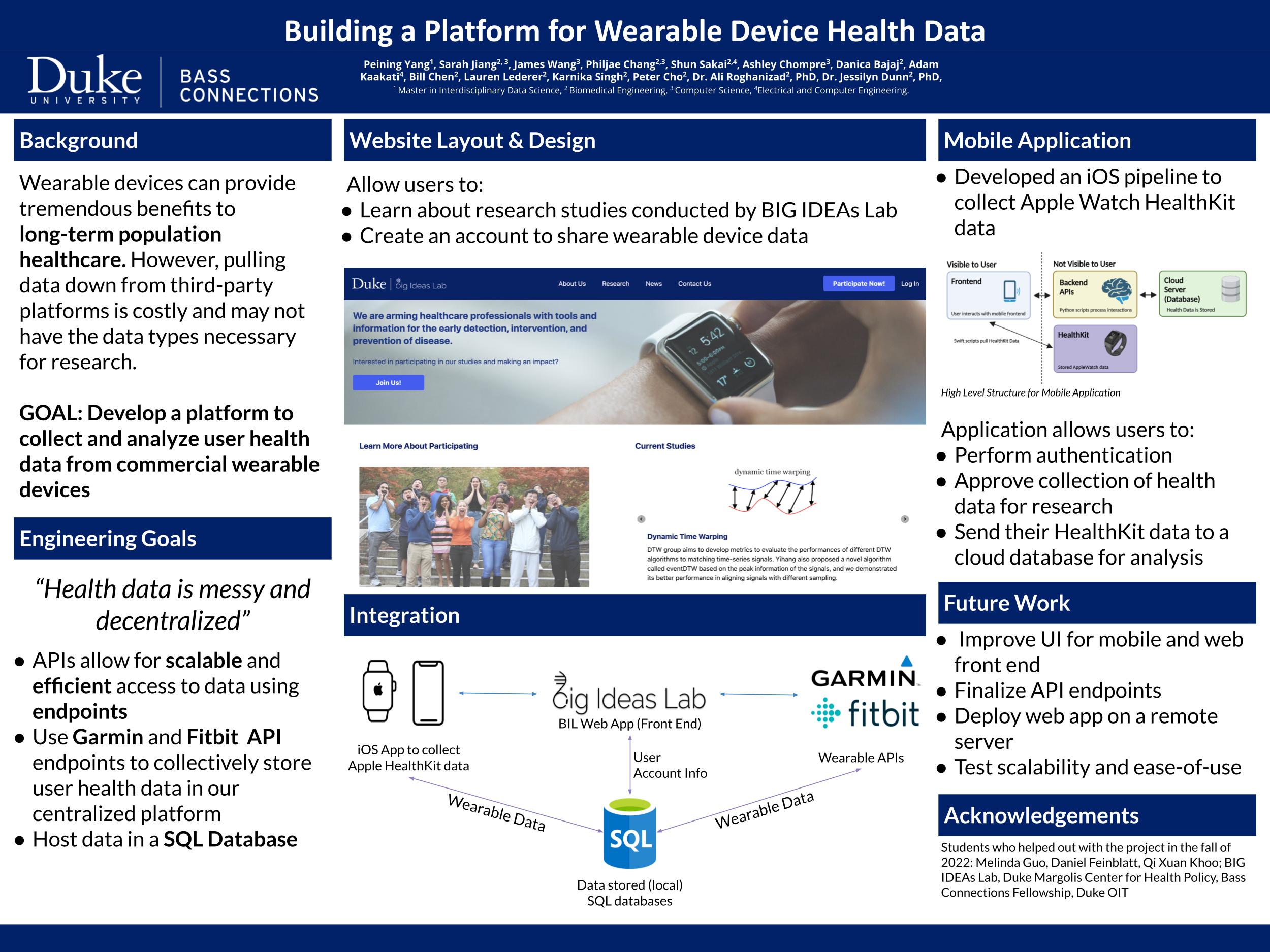Problem & Motivation
The increasing adoption of wearable devices in healthcare monitoring has created a unique opportunity for gathering continuous health data at scale. However, researchers face significant barriers when trying to utilize this data effectively. Commercial wearable platforms often keep their data in isolated ecosystems, making it challenging and expensive to access the information needed for comprehensive health studies. Our team identified the need for a unified platform that could bridge these gaps and enable efficient health data collection across multiple device types.
Methods
To address these challenges, we developed an integrated data collection system that combines web and mobile interfaces with secure cloud storage. At its core, the platform uses Django (initial) and FastAPI (final) for the web framework, with user authentication and data management handled through Azure cloud services. We created custom integrations with major wearable platforms, including Fitbit and Garmin APIs, while also developing a specialized iOS application for Apple Watch data collection. The system employs OAuth protocols to ensure secure data access and automated collection processes to maintain up-to-date health information.
Results & Impact
Our platform successfully bridges the gap between commercial wearable devices and research needs by providing a unified interface for data collection and analysis. The system's architecture allows researchers to gather continuous health data while maintaining user privacy and data security. We've implemented features that enable participant enrollment, automated data collection, and secure storage, creating a robust foundation for various health monitoring studies.
Looking ahead, we're focusing on enhancing the platform's capabilities through improved user interfaces and expanded API functionality. The system's modular design allows for easy integration of new data sources and analysis tools, making it adaptable for different research needs. This flexibility positions the platform as a valuable tool for future health monitoring studies, from early disease detection to long-term health trend analysis.
